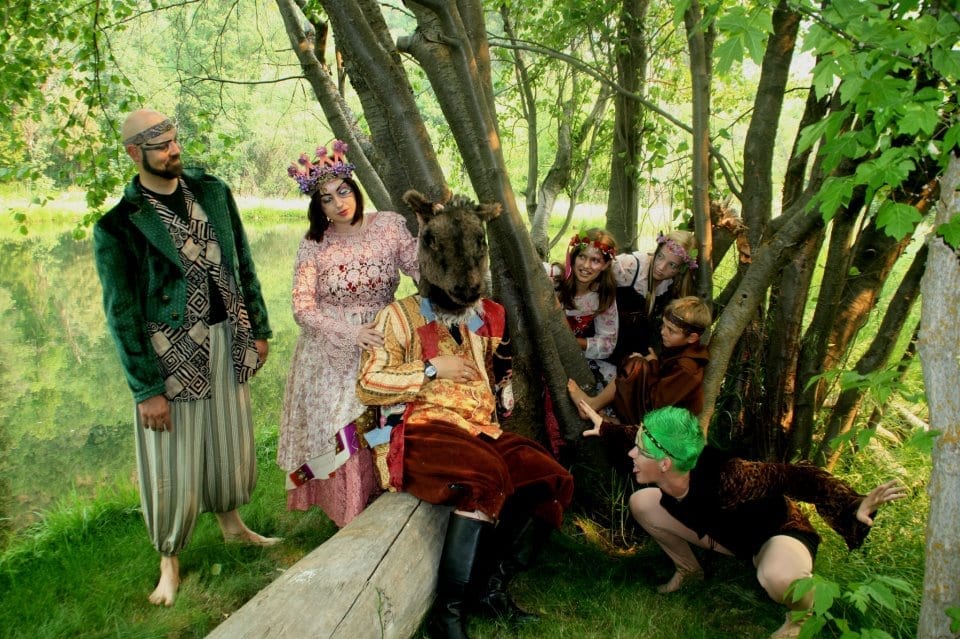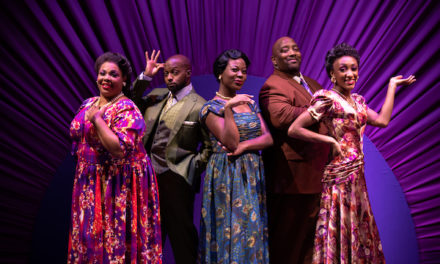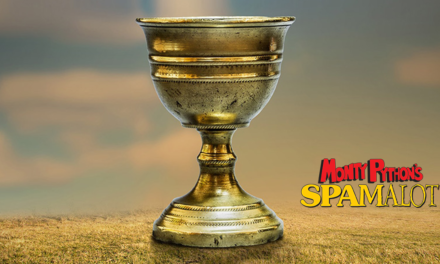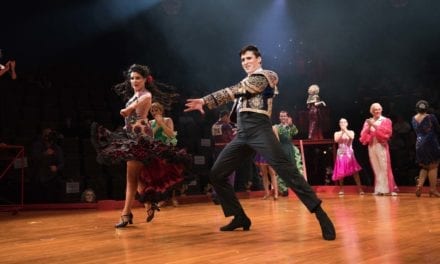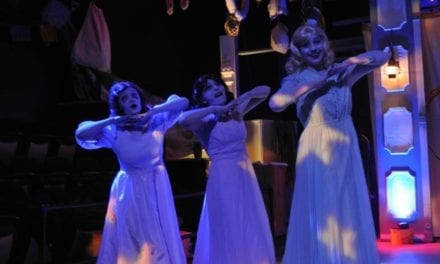SPRINGVILLE — A Midsummer Night’s Dream is a story by William Shakespeare that observes and comments on love. As the program for the Little Brown Theater’s production explains, “At first both men are in love with Hermia and reject Helena. The Fairy King, Oberon (who has his own difficulties with Queen Titania) asks Puck to fix it, and Puck blunders along until both men are “in love” with Helena!” and the show is about the development of this problem. Rather than a traditional Midsummer, though, the Little Brown has created a musical version of the classic Shakespeare play with music and lyrics by Marilyn Brown.

Show closes August 20, 2012.
The music in the play was used to give the inner thoughts of the characters as well as communicate one character to another. The dialogue would stop and a beautiful voice like Helena (played by Lucy Bradford) and Titania (played by Elise Behunin) would begin to divulge their inner desires and fears in beautiful melody. However, the actors, instead of using music to vary the levels of their performances would often speak at one level and then sing at the same level. For example, I thought that when Behunin was singing “Come, My Love,” she could have found more desire, more reasons to be singing the lyrics, and more frustrations when Bottom (as a donkey) did not respond to her. The music followed good traditional melody, chord structure, and movement to match the play’s content, but needs that extra ,both in structure and expression. I never thought that I would be asking a play with music for more key changes (because musical theatre is born through key changes).
The dancing started off with a court dance to celebrate the love of the king and queen. The peak of the dance had a maypole in the center with people weaving with the ribbons. This was impressive to see on stage because the maypole was a dance to symbolize love and matched the festive mood of the dialogue and the purpose of the party. However, in this dance and when the young fairies would dance to perform spells, it was unclear what the characters were thinking or why they were dancing. I wish that director Bill Brown had created better transitions from dialogue to singing to dancing to help tell the story.
The actors were strong in finding their characters’ desires and showing how they wanted to achieve them. Each had actor been well instructed by Bill Brown on what their character needed in each section of the plot. Bottom (played by Martin Schetselaar) used his facial expressions to connect to the audience, especially in the latter half of the play. Schetselaar took advantage of the his role to bring more asymmetry and complex facial movement of the face, which is not common in musical theatre in general. Schetselaar recognized that the face becomes more powerful when laughs are not sought for explicitly, but is used to naturally portray the scene’s humor.
The set consisted of well painted blocks to match the court and forest settings well. The vines and plants were placed to not only tell where the play was taking place, but did not distract from the players. However, I think that the audience could be pushed back and the blocks could be used as stairs from the stage to the floor. This would allow for variety in movement and allow for the entire playing area to be used. The lighting was well done, and there was never a problem with seeing actor’s faces. Yet, the lights did not change to portray mood during songs and dances, which would have helped escalate the emotion. There was only two floor microphones that caught the actors well, but the actors need to slow down and enunciate their lines so the audience can better understand what they say.
The play was beautiful and did justice to the original. Bill and Marilyn Brown did a fine job in adding music to Shakespeare’s classic, joyous tale. I recommend this version of A Midsummer Night’s Dream for those who need help getting acquainted with Shakespeare’s work. However, I wonder if the $10 ticket price for adults is too high for this production.


